182 Results with the "Philosophical" genre
Adventure Fiction (1164)
Biography (435)
Business & Finance (1)
Children's Literature (124)
Comics (6)
Culture (51)
Drama (123)
Dystopian (29)
Fable (86)
Fantasy (1132)
Fantasy (203)
Fiction (1010)
Finance (1)
Gothic Fiction (12)
Historical Fiction (615)
History (122)
Horror (56)
Lifestyle (36)
Literary (404)
Literary Fiction (207)
Memoir (113)
Mystery (422)
Non-fiction (87)
Novel (549)
Paranormal Fiction (96)
Philosophy (45)
Poetry (249)
Political Fiction (14)
Politics (42)
Practical (32)
Psychological (4)
Psychological Thriller (108)
Relationship (6)
Romance Novel (716)
Romantic Melodrama (14)
Satire (91)
Science (46)
Science Fiction (345)
Self-help (68)
Society (65)
Society (2)
Spiritual Growth (1)
story (2)
Thriller (704)
True Crime (56)
view (11)
Women's Fiction (2)
Young Adult (233)
-
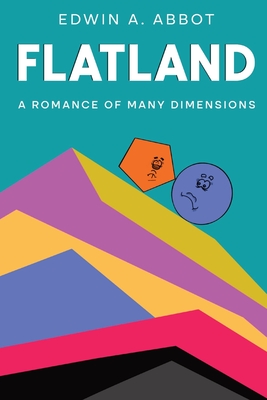 Section 11 opens by revealing a tightly guarded secret: the full truth of Flatland is known only to the Chief Circle. This knowledge is passed down only once, from one Chief to his chosen successor, just before death. Even the factory responsible for maintaining this secret takes no chances—its workers are regularly replaced to eliminate any risk of exposure. Each year, those who labored are destroyed, and new individuals are brought in. Such measures reflect the extent to which power in Flatland is…
Section 11 opens by revealing a tightly guarded secret: the full truth of Flatland is known only to the Chief Circle. This knowledge is passed down only once, from one Chief to his chosen successor, just before death. Even the factory responsible for maintaining this secret takes no chances—its workers are regularly replaced to eliminate any risk of exposure. Each year, those who labored are destroyed, and new individuals are brought in. Such measures reflect the extent to which power in Flatland is…-
92.9 K • Ongoing
-
-
 Section 1 introduces a world unlike ours—Flatland—a place confined entirely to two dimensions. The name is not used by its inhabitants, but it serves to help three-dimensional readers understand the limitations of life in such a plane. Imagine a sheet of paper where geometric shapes—Lines, Triangles, Squares, and more—move freely along the surface. They cannot rise above or sink below it. These figures aren’t drawn or imagined; they are living, thinking beings, each defined by their sides and…
Section 1 introduces a world unlike ours—Flatland—a place confined entirely to two dimensions. The name is not used by its inhabitants, but it serves to help three-dimensional readers understand the limitations of life in such a plane. Imagine a sheet of paper where geometric shapes—Lines, Triangles, Squares, and more—move freely along the surface. They cannot rise above or sink below it. These figures aren’t drawn or imagined; they are living, thinking beings, each defined by their sides and…-
92.9 K • Ongoing
-
-
Chapter
Rules
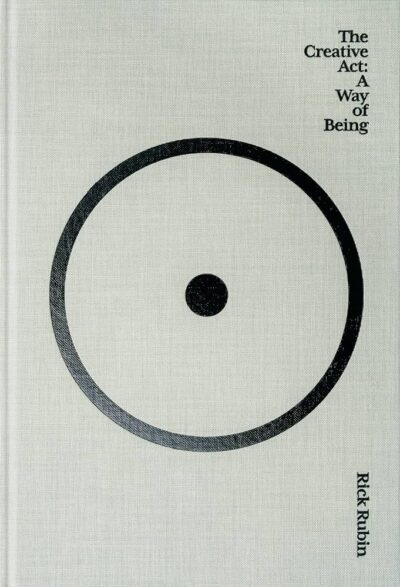 Creativity flourishes when artists dare to question the limitations imposed by convention, using rules not as restrictions but as temporary stepping stones toward innovation. This chapter explores the distinction between the fixed principles of disciplines like mathematics and science, where laws are unchanging, and the fluid nature of artistic rules, which are more suggestive than binding. Art, unlike scientific formulas, thrives on its ability to evolve, shaped by cultural shifts, personal…
Creativity flourishes when artists dare to question the limitations imposed by convention, using rules not as restrictions but as temporary stepping stones toward innovation. This chapter explores the distinction between the fixed principles of disciplines like mathematics and science, where laws are unchanging, and the fluid nature of artistic rules, which are more suggestive than binding. Art, unlike scientific formulas, thrives on its ability to evolve, shaped by cultural shifts, personal…-
341.4 K • Ongoing
-
-
Chapter
Right Before Our Eyes
 In Right Before Our Eyes, the chapter examines the familiar struggle of creative stagnation, a state that many artists experience at some point in their journey. Often labeled as "writer’s block" or "creative block," this feeling is not the absence of creativity but rather a temporary disconnection from the ever-present flow of ideas. The text suggests that instead of seeing these moments as an external force halting progress, artists should recognize that they may, consciously or unconsciously, be…
In Right Before Our Eyes, the chapter examines the familiar struggle of creative stagnation, a state that many artists experience at some point in their journey. Often labeled as "writer’s block" or "creative block," this feeling is not the absence of creativity but rather a temporary disconnection from the ever-present flow of ideas. The text suggests that instead of seeing these moments as an external force halting progress, artists should recognize that they may, consciously or unconsciously, be…-
341.4 K • Ongoing
-
-
Chapter
Preface
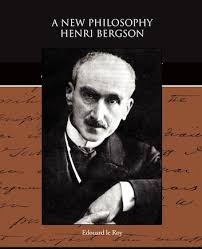 Preface serves as a welcoming point of entry into the complex yet accessible philosophy of Henri Bergson. The original inspiration for the work came from two essays published in early 1912, and this expanded edition adds more continuity and depth to clarify points that may challenge first-time readers. The writer does not intend to critique Bergson’s thought academically, as the philosopher’s ideas continue to develop. Instead, the goal is to make Bergson’s vision understandable for a broader…
Preface serves as a welcoming point of entry into the complex yet accessible philosophy of Henri Bergson. The original inspiration for the work came from two essays published in early 1912, and this expanded edition adds more continuity and depth to clarify points that may challenge first-time readers. The writer does not intend to critique Bergson’s thought academically, as the philosopher’s ideas continue to develop. Instead, the goal is to make Bergson’s vision understandable for a broader…-
57.6 K • Ongoing
-
-
Chapter
Prayers
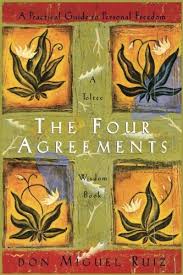 Prayers are presented as a deep invitation to connect intimately with the divine, drawing attention to a heart-centered approach to experiencing love and communion with the Creator. The focus is on the breath, encouraging readers to become aware of this simple yet vital process. In doing so, the chapter highlights how something as fundamental as breathing can offer immense peace and joy. It serves as a reminder that the breath is a tool for mindfulness, grounding us in the present moment and offering a…
Prayers are presented as a deep invitation to connect intimately with the divine, drawing attention to a heart-centered approach to experiencing love and communion with the Creator. The focus is on the breath, encouraging readers to become aware of this simple yet vital process. In doing so, the chapter highlights how something as fundamental as breathing can offer immense peace and joy. It serves as a reminder that the breath is a tool for mindfulness, grounding us in the present moment and offering a…-
90.9 K • Ongoing
-
-
Chapter
Practice
 Developing a heightened awareness of one’s surroundings is an invaluable practice for artists, creatives, and individuals seeking to live with greater presence and purpose. In nature, animals focus intently on survival, their attention honed on securing food, shelter, and safety. However, for human beings, particularly those engaged in artistic pursuits, a narrow focus can sometimes be limiting rather than helpful. Creativity thrives on an expansive perspective, one that absorbs and synthesizes…
Developing a heightened awareness of one’s surroundings is an invaluable practice for artists, creatives, and individuals seeking to live with greater presence and purpose. In nature, animals focus intently on survival, their attention honed on securing food, shelter, and safety. However, for human beings, particularly those engaged in artistic pursuits, a narrow focus can sometimes be limiting rather than helpful. Creativity thrives on an expansive perspective, one that absorbs and synthesizes…-
341.4 K • Ongoing
-
-
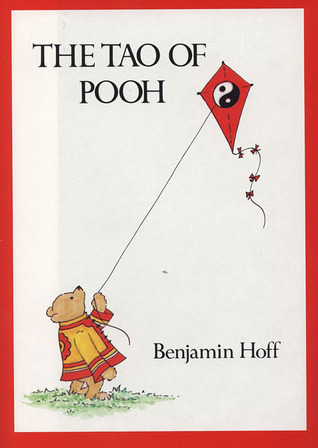 The Vinegar Tasters offers a playful yet insightful introduction to the Taoist philosophy through a whimsical dialogue between the narrator and Pooh. As Pooh expresses curiosity about Taoism, which he has heard of but doesn’t fully understand, the narrator crafts an imaginative journey to China to clarify this concept. They find themselves in a small shop full of allegorical scrolls and stumble upon a painting titled "The Vinegar Tasters." This artwork features three significant figures—Confucius,…
The Vinegar Tasters offers a playful yet insightful introduction to the Taoist philosophy through a whimsical dialogue between the narrator and Pooh. As Pooh expresses curiosity about Taoism, which he has heard of but doesn’t fully understand, the narrator crafts an imaginative journey to China to clarify this concept. They find themselves in a small shop full of allegorical scrolls and stumble upon a painting titled "The Vinegar Tasters." This artwork features three significant figures—Confucius,…-
68.0 K • Ongoing
-
-
Chapter
Point of View
 The chapter "Point of View" delves into the essence of art and its role in expressing the unique perspective of the artist. Rather than aiming for technical perfection or universally accepted beauty, the goal of art is to communicate the artist's personal view of the world. This expression allows others to engage with the artist's inner world, experiencing emotions, thoughts, and observations that might differ from their own. It is in this distinct personal element—rather than in adherence to…
The chapter "Point of View" delves into the essence of art and its role in expressing the unique perspective of the artist. Rather than aiming for technical perfection or universally accepted beauty, the goal of art is to communicate the artist's personal view of the world. This expression allows others to engage with the artist's inner world, experiencing emotions, thoughts, and observations that might differ from their own. It is in this distinct personal element—rather than in adherence to…-
341.4 K • Ongoing
-
-
Chapter
Point of Reference
 In Point of Reference, the chapter explores how our perception of art, music, and creative expression evolves when we encounter something unfamiliar. Often, when we first engage with a new artistic work—especially one that defies convention or deviates from our past experiences—there is an immediate sense of dissonance. This reaction is rooted in the absence of a familiar frame of reference, making the work appear strange or even unappealing. Whether it’s a musician experimenting with unconventional…
In Point of Reference, the chapter explores how our perception of art, music, and creative expression evolves when we encounter something unfamiliar. Often, when we first engage with a new artistic work—especially one that defies convention or deviates from our past experiences—there is an immediate sense of dissonance. This reaction is rooted in the absence of a familiar frame of reference, making the work appear strange or even unappealing. Whether it’s a musician experimenting with unconventional…-
341.4 K • Ongoing
-
- Previous 1 … 5 6 7 … 19 Next
